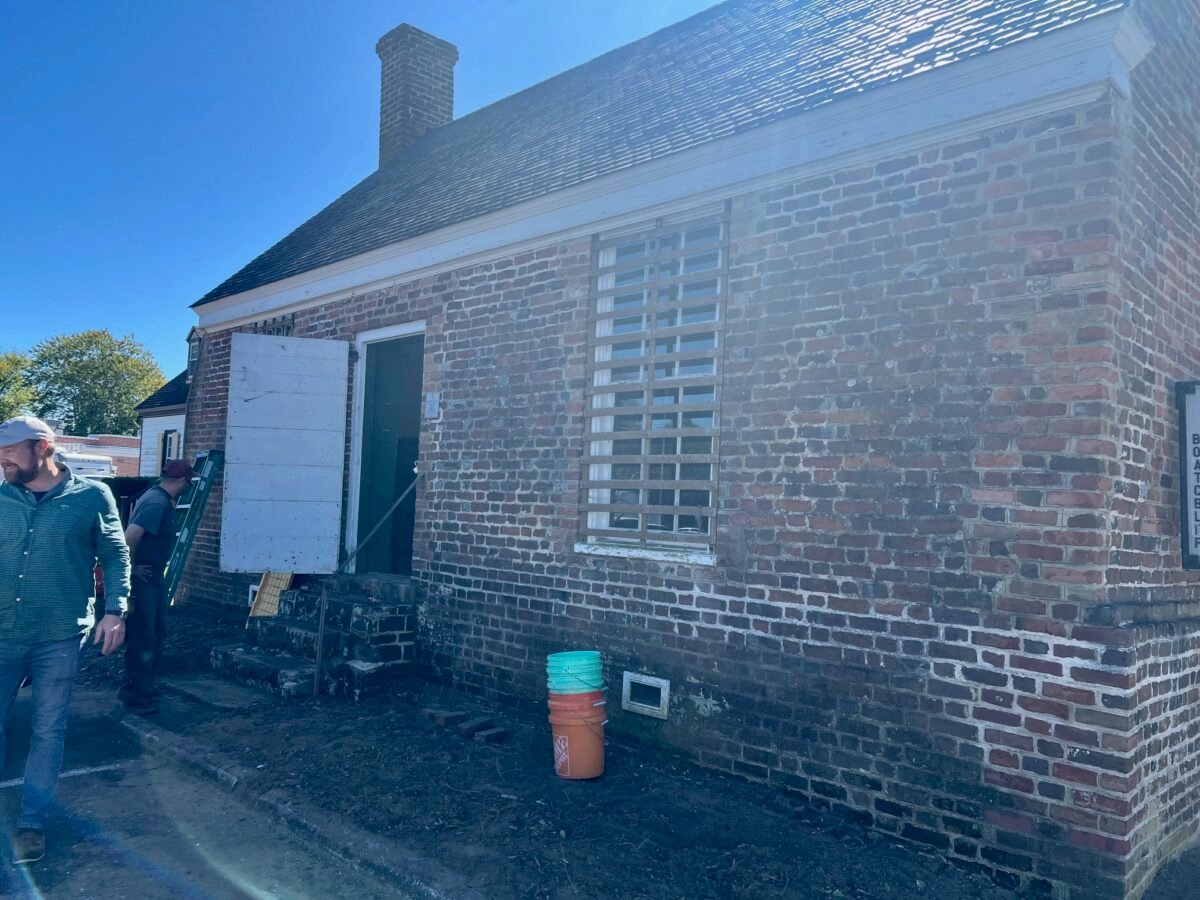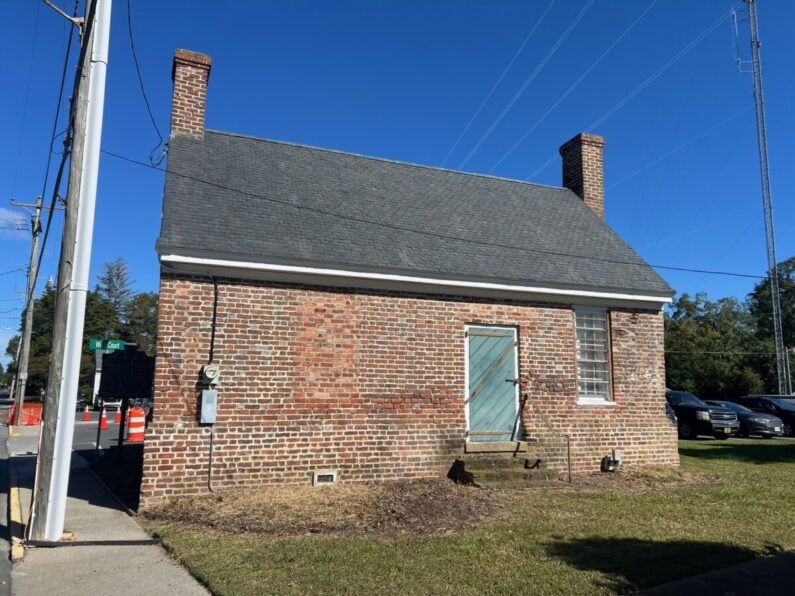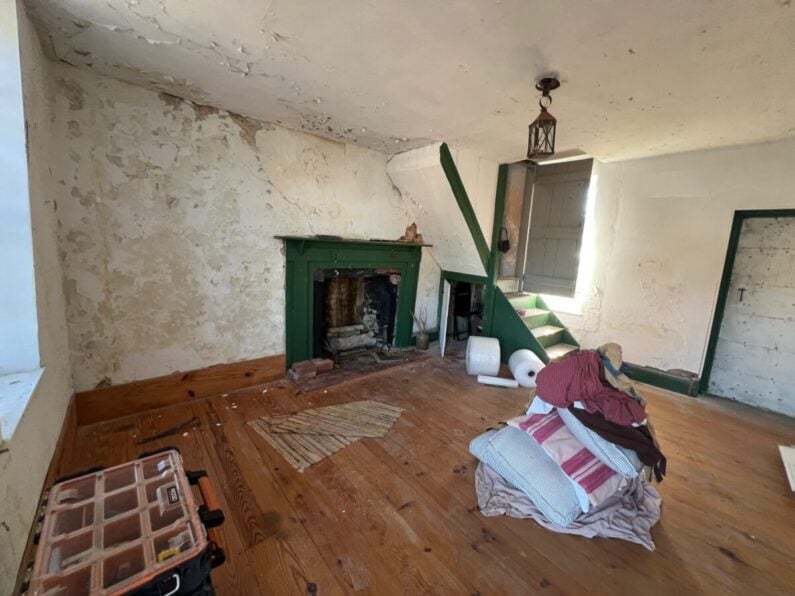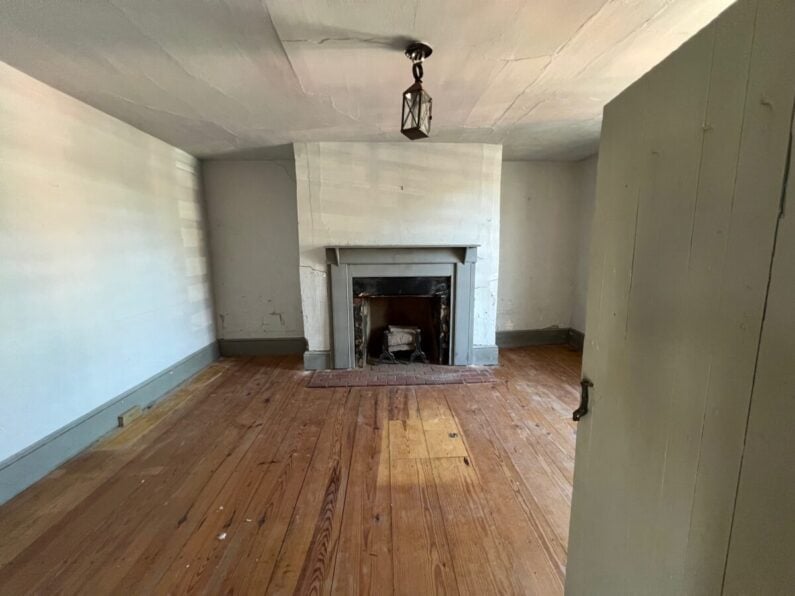
Renovation on the historic Accomac Debtor’s Prison has officially begun.
Contractors with Landmark Preservation, a historic preservation and renovation firm, began their work Tuesday morning. The four-phase plan will prioritize urgent moisture and masonry work before moving to exterior finishes, interiors, and a discreet electrical upgrade. The total budget estimate is $261,798.75.
“We will know a lot more in a few weeks,” said John Ecker, project manager. “Once we can get into the bones, we’ll be able to tell a lot about this building.”
Phase I, estimated at $142,000, targets urgent water and structural issues. Crews will repair and reset loose slate on the roof, install copper ridge flashing, regrade the site to improve drainage, and remove vegetation and debris that hold moisture. Incompatible Portland-cement mortar would be replaced with traditional lime mortar, cracks stitched with stainless steel, and new vented chimney caps installed to prevent water intrusion.
Phase II, totaling $34,600, will restore exterior features—replacing concrete door sills with timber, repairing and repainting the historic batten doors, cleaning and repointing brick steps, and restoring wood windows, cornices, and rake boards.
Interior stabilization in Phase III ($62,000) includes reattaching loose plaster, replacing deteriorated sections with lime plaster, conserving or replacing rusted firebox lintels, and adding a new masonry pier to correct floor deflection.
The final phase ($23,000) relocates modern electrical service off the building’s façade, running power underground to preserve the structure’s appearance.
Consultants emphasized that moisture control and proper lime-based materials are critical to halting deterioration. The plan follows federal preservation standards and aims to protect Accomack’s oldest municipal building while maintaining its historic character.
The renovation is funded by a grant from Governor Glenn Youngkin for the VA250 campaign.
The Debtor’s Prison was originally built in 1783 in a corner of the jail yard to serve as a residence for the jailer. The building served in this capacity for 41 years. Iron bars, oak batten doors and locks were added in 1842 when it was converted into a prison for debtors in Accomack County.
















